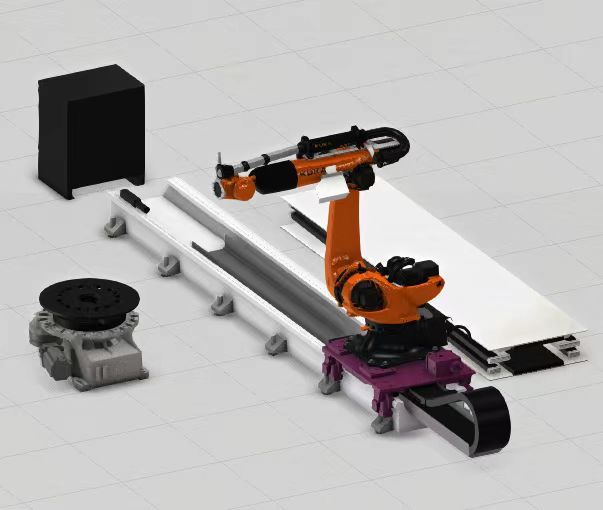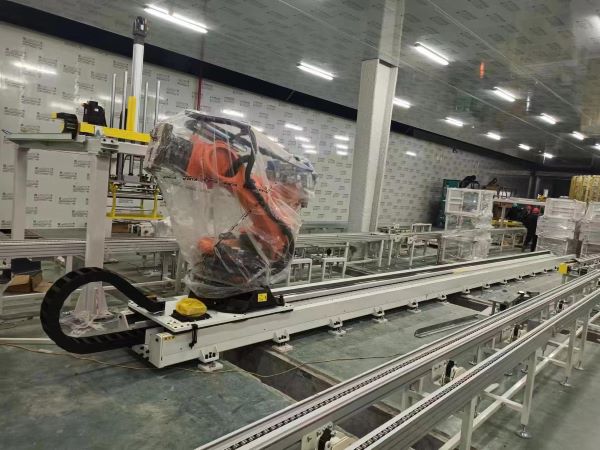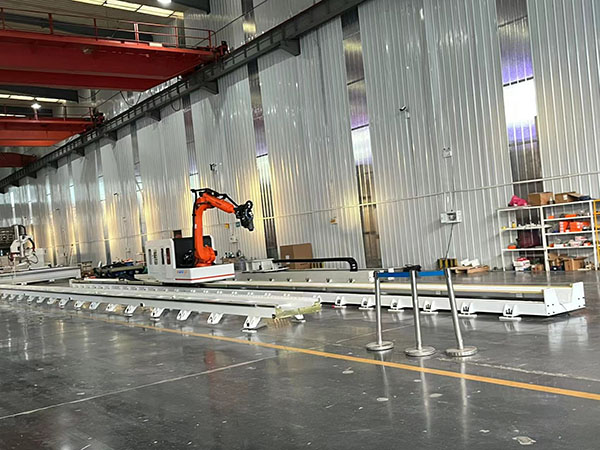Writer: admin Time:2024-02-21 18:00 Browse:℃

What is the difference 7 axis robot arm cnc and 6 axis robot
Time-saving in the Design Phase: Designing your machine around a robot doesn't have to be a time-consuming and costly process. Consider a scenario like machine tending. When using a 6-axis robot, you must ensure clearance for the CNC machine door and adequate reach for all required positions. Yet, even with careful planning, you may encounter surprises like joint limitations when accessing the machine or closing the door. However, with a 7-axis robot arm , maneuvering around obstacles like doors becomes effortless. There's no need to meticulously plan the robot's path; a few basic measurements suffice to set up the application efficiently.
Cost Reduction: If you've ever operated a 6-axis arm, you're familiar with its limitations, especially when packing boxes or working near the robot's base. Achieving rotation with a 6-axis arm often involves adjusting the first joint, as illustrated below. However, a 7-axis robot arm cnc distributes the load more evenly across its joints, particularly Joint 1. By minimizing wear on individual joints, the robot's lifespan is extended, resulting in long-term cost savings.
Space Efficiency on the Factory Floor: With a 7-axis robot arm cnc , working in close proximity to its base poses no challenges. The additional axis allows the arm to bend in unique ways, facilitating work directly in front of it. Consequently, when constructing a machine, you can optimize space utilization, as a 7-axis robot with rails requires less room compared to a 6-axis counterpart. Additionally, a robot with shorter reach can suffice for the same application, further enhancing space efficiency.

Time-saving during Deployment: Errors in considering the limitations of a 6-axis robot during the design phase can lead to costly modifications later on. For instance, misplacing the work station in close proximity to the robot may necessitate layout adjustments, consuming both time and money. Moreover, programming a 6-axis robot for complex applications may require extensive hours, potentially delaying project timelines and incurring high programmer costs. While 6-axis robots have their uses, specific application requirements may make a 7-axis robot with rails a more practical choice.
Seven-axis robots with rails , classified as high-degree-of-freedom (DOF) robots due to their more than six axes, are becoming increasingly prevalent in robotics as applications grow in complexity and manufacturers seek more versatile options. These robots come in two configurations. Firstly, there's the articulated robot structure, where an additional axis is integrated into the manipulator arm. This extra axis enables the robot to bend its arm, facilitating better access to workpieces by avoiding obstacles. An example of this configuration is the Motoman seven-axis articulated robot. Secondly, there's the setup involving a six-axis robot with the addition of a track system, which serves as the seventh axis. This track system allows the robot to move linearly across the factory floor or between workstations. By mounting the robot on suntec rails tracks attached to the track system, it gains mobility to automate sequences of tasks.

Applications for seven-axis robot
encompass a range of automation tasks, particularly material handling applications. The use of suntec rails track enhances material handling automation by accelerating part transfer in tasks like pick and place or part transfer operations. Integrating robots like KUKA or other brands with Rails enables rapid part transfer over several feet in mere seconds. Additionally, seven-axis robots excel in automated machine tending, loading/unloading, injection molding, and welding applications. Major players like KUKA, FANUC, and Yaskawa Motoman have introduced seven-axis articulated robots specifically tailored for welding automation.
The advantages of seven-axis robots are manifold. They enable more precise tooling positioning, particularly beneficial when handling parts with intricate geometries. The additional axis grants
Phone: +86 15910100309
Tel: +86 15966606596
Email: info@sunteccnc.com
Add: 13908 Factory licheng district jinan city